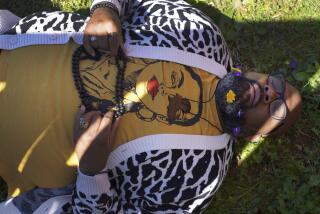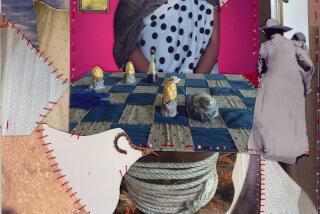A Guidebook to Dark Corners and New Pathways
First, a confession. I did not--could not, in the time available--read “Wake Up to Your Life” as it was intended to be read. It is not simply that each meditative exercise described in detail requires weeks of practice to be fully grasped, but also that each succeeding exercise builds on all that went before in such a way that readers will lose substantial benefits if they don’t follow all the steps. This is truly a workbook, in the full and best sense of the word. It is not a book to pick up simply for the read.
That said, let no one be discouraged, because this is one of the most complete and satisfying workbooks of its kind. The shelves of bookstores abound with those neat, slim how-to volumes that seem to promise to make meditation easy--and certainly these books fulfill a purpose.
At its most basic, meditation is easy: It’s a matter of setting the tush on the cush, as they say, (the rear end on the zafu, a meditation pillow), and paying close attention to the breath. Who’s to say that the wonderful sense of calm and connection one can achieve in this way is not of important spiritual value? And, in its simplicity and directness of experience, in its insistence on pure awareness and on being present in the here and now, the aims of this basic practice are frankly not so far removed from what Ken McLeod is offering.
But McLeod beckons us into much more dangerous territory. He reminds us that “the purpose of practice is to move out of the reactive patterns that create suffering” in our lives, “to wake up from the sleep in which we dream that we are separate from what we experience.” He challenges his readers to take the uncompromising path--the way that requires us to cast the unsparing light of consciousness into the darkest, most uninviting corners of our lives and root out those often unsuspected patterns of behavior or belief that cause suffering to ourselves and those around us. “Think of these exercises,” he writes, “as putting your life on a dissecting table and taking it apart to see what it is.” Ouch!
But the metaphor is a good one. As McLeod points out, “all spiritual work is essentially destructive in nature,” a way of developing “an outlook that shows us the way out of the confusion of patterned existence.” This outlook, he adds, is not a belief, but rather “points to the mystery of being and shows us how to open to it and live in it.”
The exhaustive road map of practices he provides us with, if we are willing to work with him, is rooted solidly in his training in the traditions of Tibetan Buddhism, but re-contextualized from Buddhism’s remote cultural origins into a language and system that speaks beyond religious affiliation to the contemporary American mind.
Blending personal experience with anecdote, meticulous instruction and commentary--and refreshing the eye and mind from time to time with large-print citations--McLeod leads us through a series of profound contemplations on death, karma (understood in good part as the way that patterns operate in our lives) and the tyranny of reactive emotions, toward the mastery of the “Four Immeasurables.”
In Buddhist thinking, these are the qualities of equanimity, lovingkindness, compassion and sympathetic joy, which McLeod describes as cultivated, nonreactive emotions that have “the same transformative quality as mercy.”
He elucidates the benefits of mind training through the difficult practice of tonglen (“giving and taking”), which requires the practitioner to absorb the suffering of others and surrender his own well-being to them, and guides the reader through the experience of “emptiness” (the recognition that everything we take to be real, including our selves, is no more than self-created illusion) toward the eventual freeing of mind and the realization of our original nature in oneness with pure being.
This is heady stuff, and an area in which it is all too easy to fall into feel-good cliche. McLeod avoids the pitfalls because he remains rooted securely in the practical immediacy of direct experience and hews closely to the time-tested methods and teachings of Tibetan masters through the centuries.
In a spirit of good intentions--not to mention personal curiosity--I worked through some of the meditations with which I was not familiar (over days, however, not the recommended weeks) and found them to be of exceptional value and promise. Readers who follow his guided meditation on impermanence, for example, will surely come to a striking, very immediate clarity on the fragile spark of their own life in the vast nature of things.
For anyone serious about developing a meditation practice, this book will be an invaluable guide through the thickets of self-deception, skepticism and despair that invariably accompany one along the path. And to those who accept the challenge, it will surely live up to its title far beyond the easy promises of that plethora of books that offer to change your life.
*
Peter Clothier is the author of “While I Am Not Afraid: Secrets of a Man’s Heart.”
More to Read
Sign up for our Book Club newsletter
Get the latest news, events and more from the Los Angeles Times Book Club, and help us get L.A. reading and talking.
You may occasionally receive promotional content from the Los Angeles Times.








